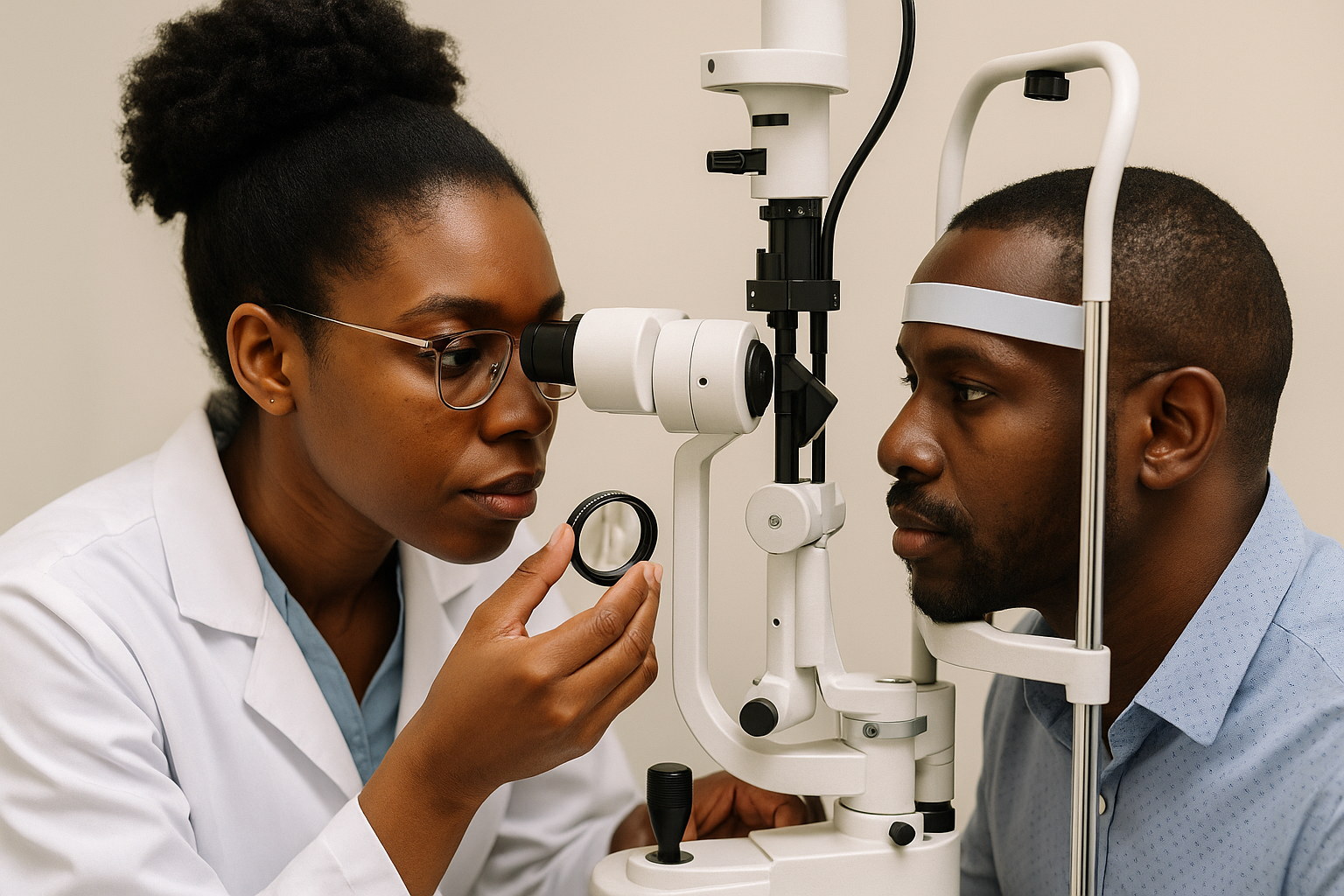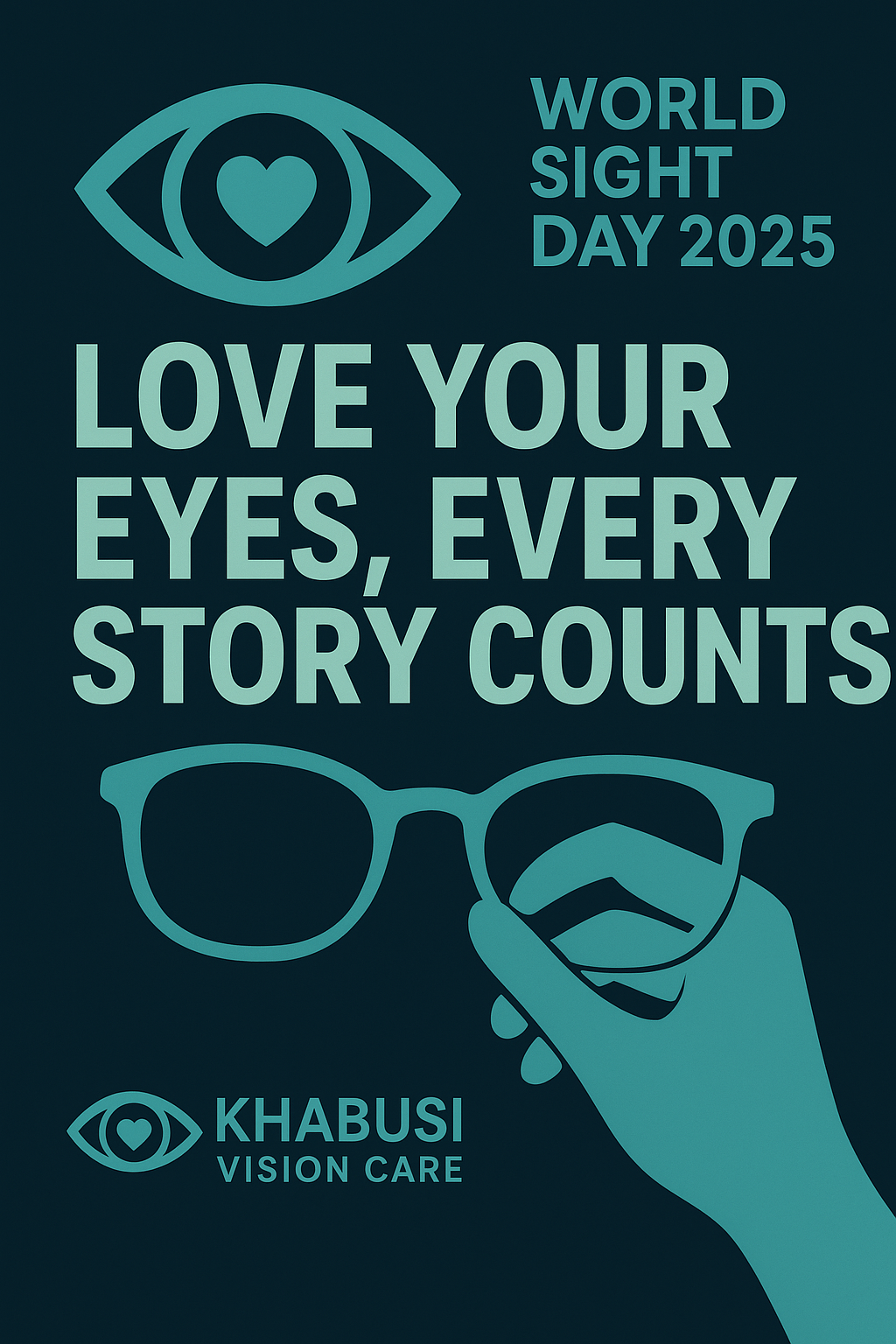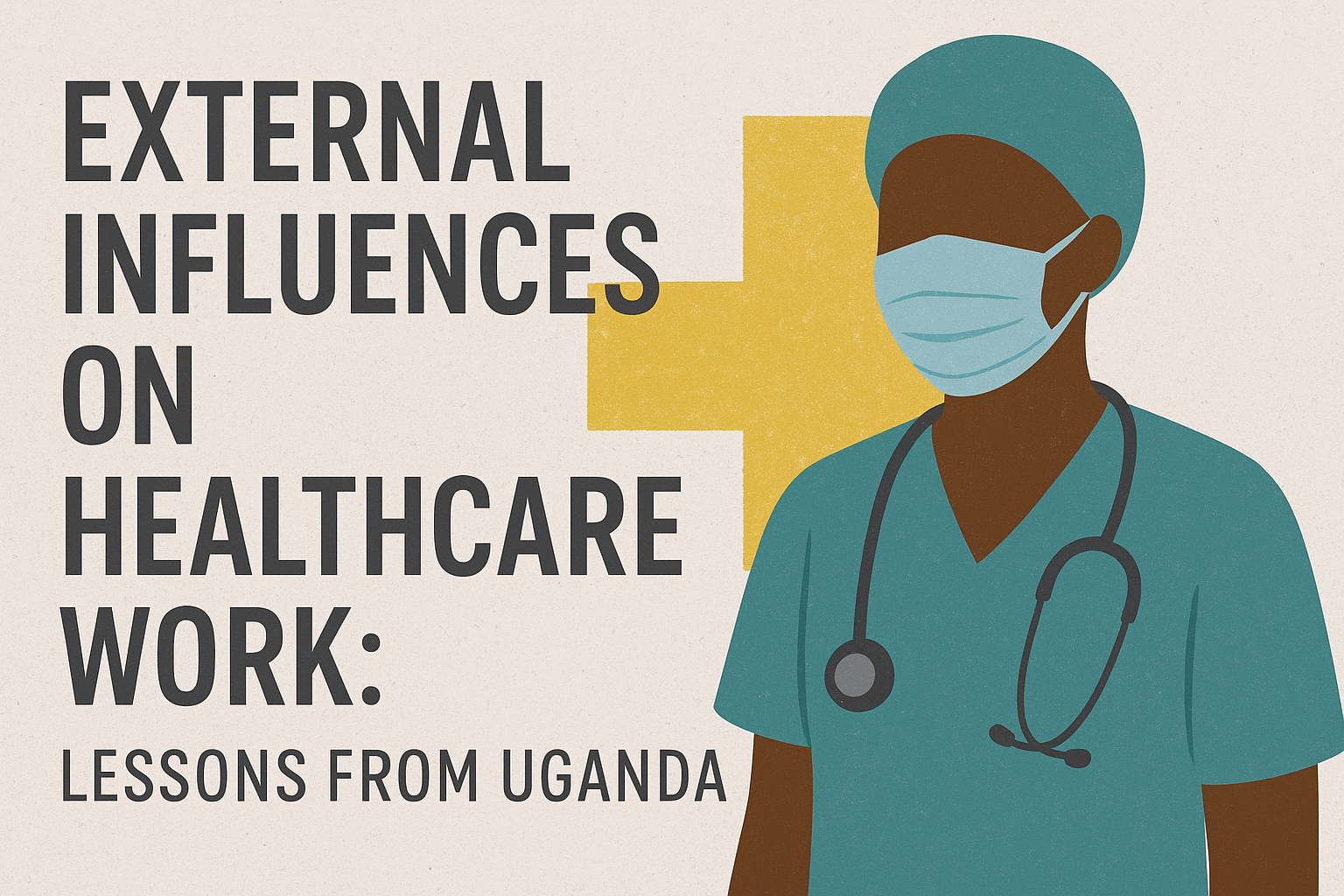
A Poor-Quality Eye Exam Can Be Worse Than No Eye Exam at All
Posted on Jul 16, 2025 by Timothy Khabusi
Category: Eye Health
Today at work, while I was in my consultation room, I overheard an interesting exchange between a walk-in client and our receptionist.
The client began by saying, “I’d like to have an eye checkup.”
The receptionist explained our consultation fee.
The client quickly responded, “Nga lwaki sigenda ewa bayindi abekebera amaaso kubwerere?!”
Loosely translated: “Why shouldn’t I just go to the Indians who check eyes for free?!”
That statement stopped me in my tracks—not because I hadn't heard it before, but because it brought to life two deep concerns I’ve wrestled with for a long time:
1. Misrepresentation of What an Eye Exam Truly Is
In many corners of the eye care sector, we see a dangerous trend: equating a full eye examination with refraction alone—or worse, with automated refraction done using machines operated by untrained personnel.
These practices often advertise a “computerized eye test” as if it were a comprehensive eye examination. To the unsuspecting public, it sounds modern, precise, and adequate. But this is far from the truth.
In reality, this “free computer test” is usually just an auto-refraction—a quick, machine-based estimate of your refractive error. It cannot assess your eye health, detect early disease, or account for the finer nuances of vision correction. It’s one piece of a much larger puzzle, and when presented as the whole picture, it becomes dangerously misleading.
2. Public Unawareness of What an Eye Exam Should Include
Many patients have never been told what to expect from a proper eye examination. And because of that, they may not know what they’re missing.
So let’s break it down:
What Does a Proper Eye Exam Involve?
A comprehensive eye examination should ALWAYS include the following three components:
1. Visual Acuity Testing
This is where the clinician determines how well you can see. It involves the use of standard vision charts—like the Snellen chart or other formats—tailored to the patient’s age and literacy level. It's the starting point and helps guide the rest of the assessment.
2. Refraction
This is the process of identifying whether you have a refractive error such as:
-
Myopia (nearsightedness)
-
Hyperopia (farsightedness)
-
Astigmatism
-
Presbyopia (age-related focusing difficulty)
The clinician will determine if vision correction is needed and what lens powers will provide the clearest vision. This may involve both objective methods (like auto-refraction or retinoscopy) and subjective refinement (where you give feedback on which lenses are clearer).
Many so-called "free eye exams" stop at this step—leaving out the most critical part that follows.
3. Ocular Health Assessment
This is arguably the most important part of an eye exam, and it’s often completely neglected in free or informal “checkups.”
In this step, the eye care professional evaluates the internal and external structures of your eyes to detect early signs of eye disease—many of which can be silent in their early stages, including:
-
Glaucoma
-
Diabetic retinopathy
-
Hypertensive changes
-
Cataracts
-
Macular degeneration
-
Infections or inflammations
Proper ocular health assessment may require tools like a slit lamp, ophthalmoscope, tonometer (for eye pressure), or imaging technologies like OCT, depending on the setting.
Without this component, serious eye conditions can go undetected until it's too late.
Know Who’s Examining You
Patients have the right to know the qualifications of the practitioner examining their eyes. In Uganda, and in many other countries with loose regulatory enforcement, unqualified individuals often pose as eye care professionals—sometimes unknowingly doing more harm than good.
If you're ever unsure, ask to see the practitioner's license. A competent, licensed optometrist, ophthalmologist, or ophthalmic clinical officer will never hesitate to show it to you.
Why a Poor Eye Exam Can Be Worse Than None
A poorly done eye exam can create a false sense of security, delay diagnosis, or result in incorrect prescriptions that strain the eyes, worsen symptoms, or even mask serious disease.
Imagine being told, "Your eyes are fine," based on a quick machine test—while a condition like glaucoma silently progresses. That’s not just misleading. It’s dangerous.
Quality Eye Care Isn’t Free by Default
While there are outreach programs designed to offer free comprehensive eye exams—often sponsored by NGOs or health campaigns—routine full exams in clinical settings usually come at a cost. And for good reason: proper tools, qualified personnel, and time are required to do the job well.
The goal isn’t to discourage affordability—but to emphasize the value and integrity of professional eye care.
In Summary:
-
A proper eye exam is much more than a quick refraction.
-
Don't be misled by flashy machines or free offers.
-
Know who is examining you, and what they're qualified to do.
-
Don’t settle for less when it comes to your vision.
Your eyes deserve better.

Timothy Khabusi
Optometrist, Innovator and Lifelong Learner. Dedicated to making eye care and science accessible and impactful.
Leave a Comment
Comments
This is so amazing! Well-done my brother. This information is very helpful to the public
Thank you for this post . The public can now understand that “free eye tests “ are not free .


